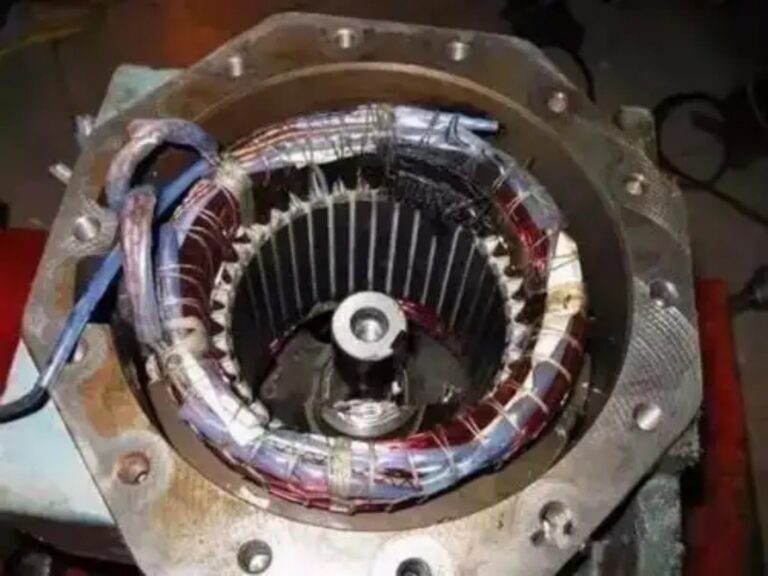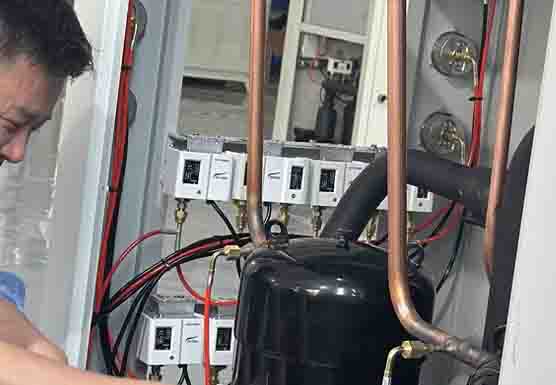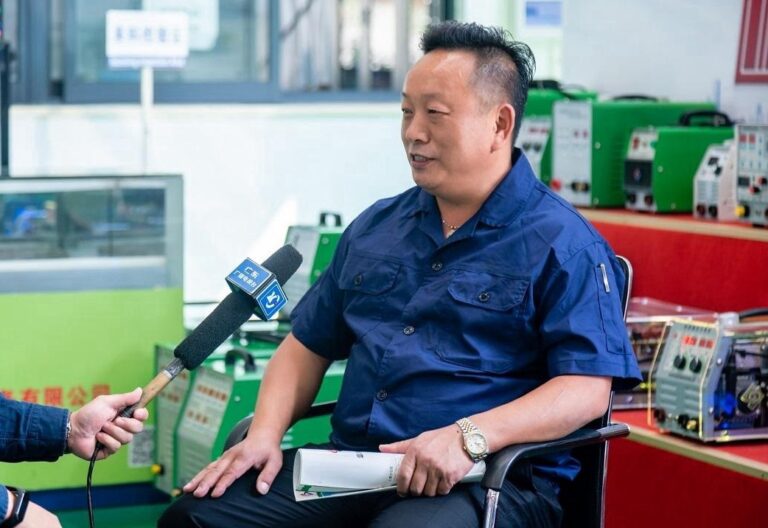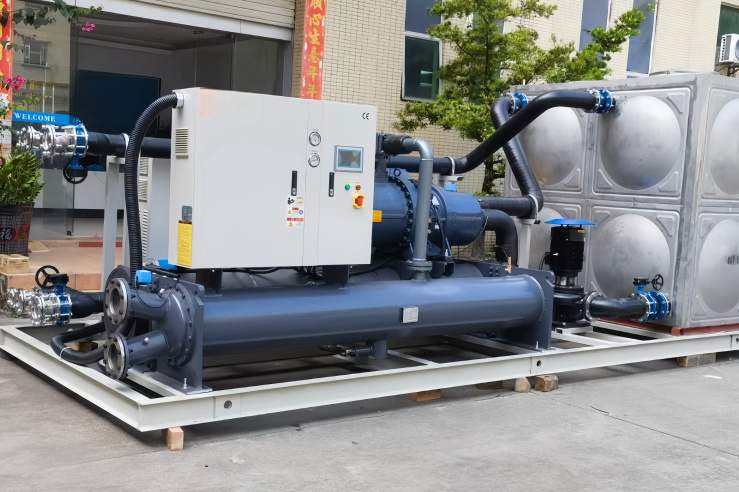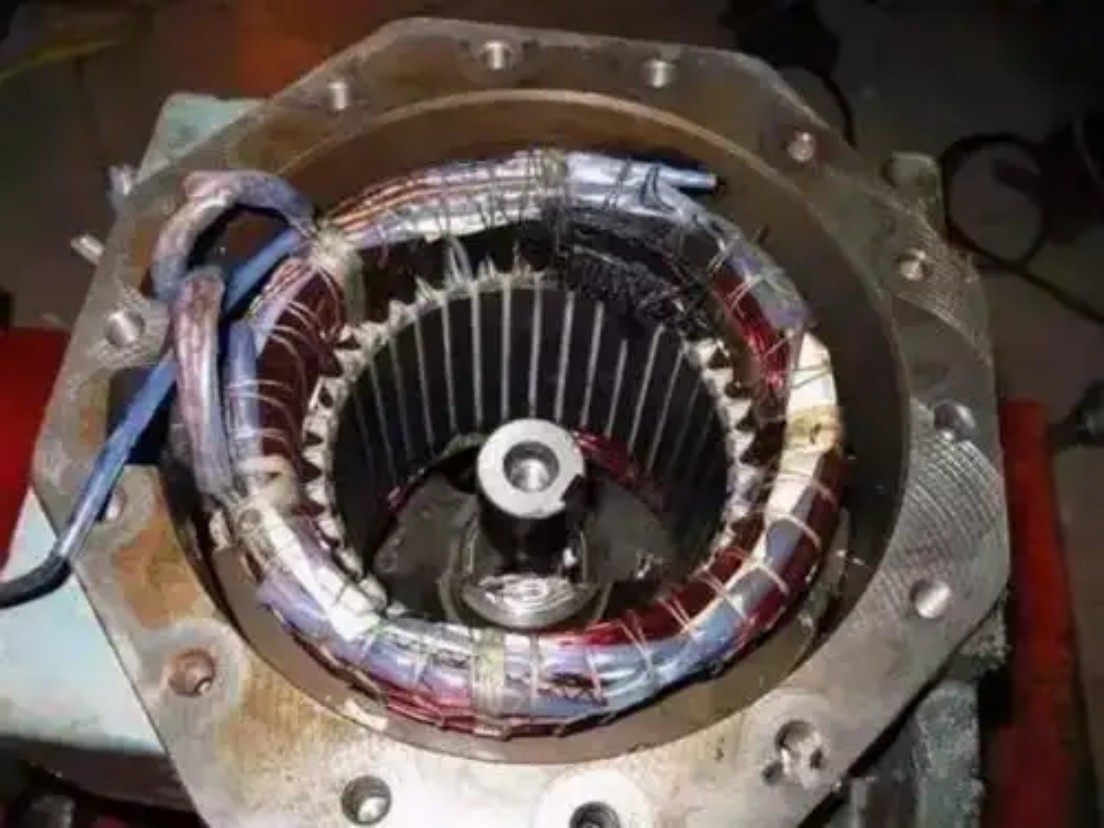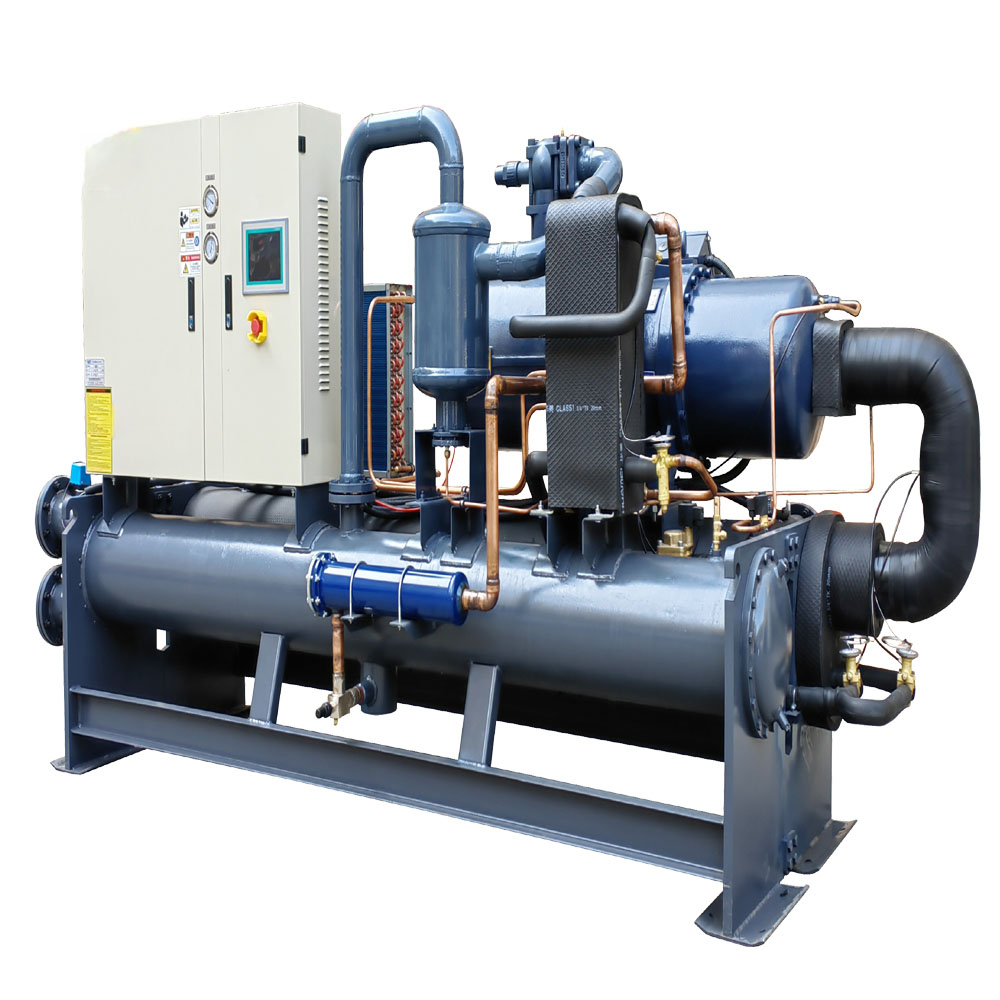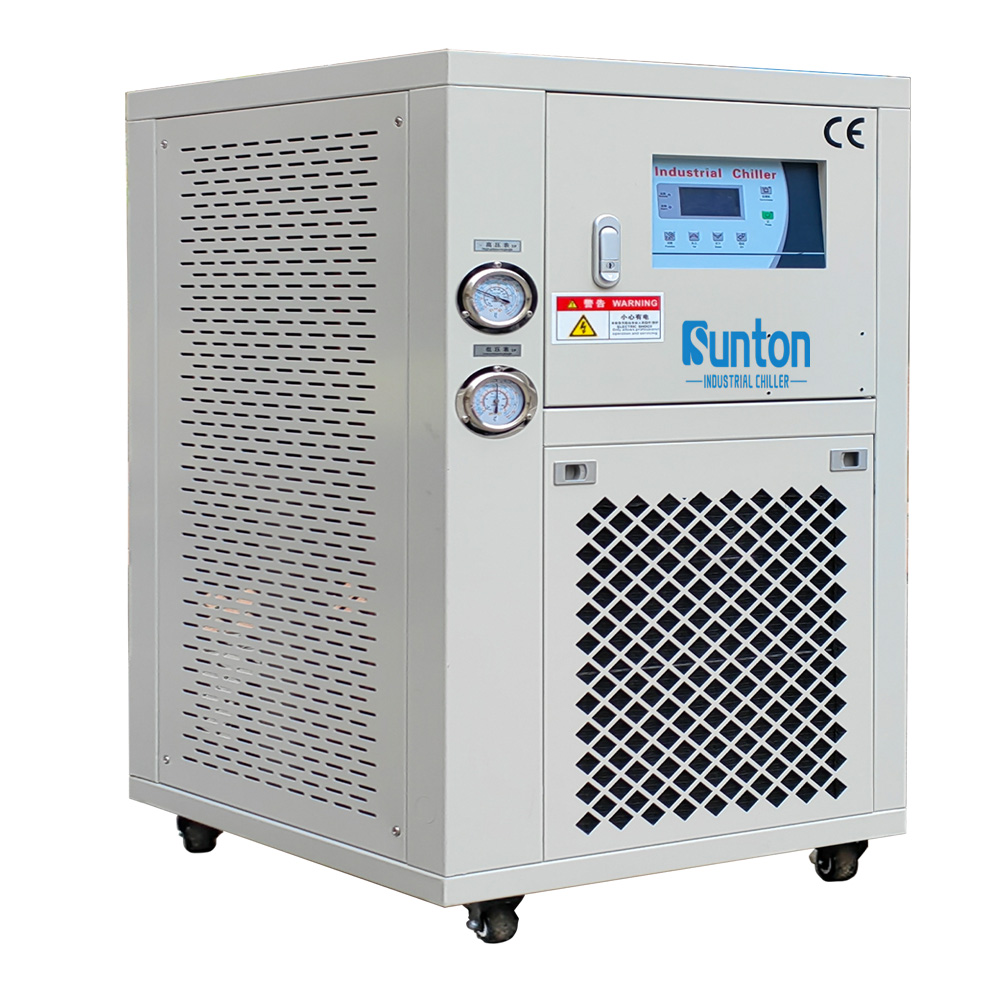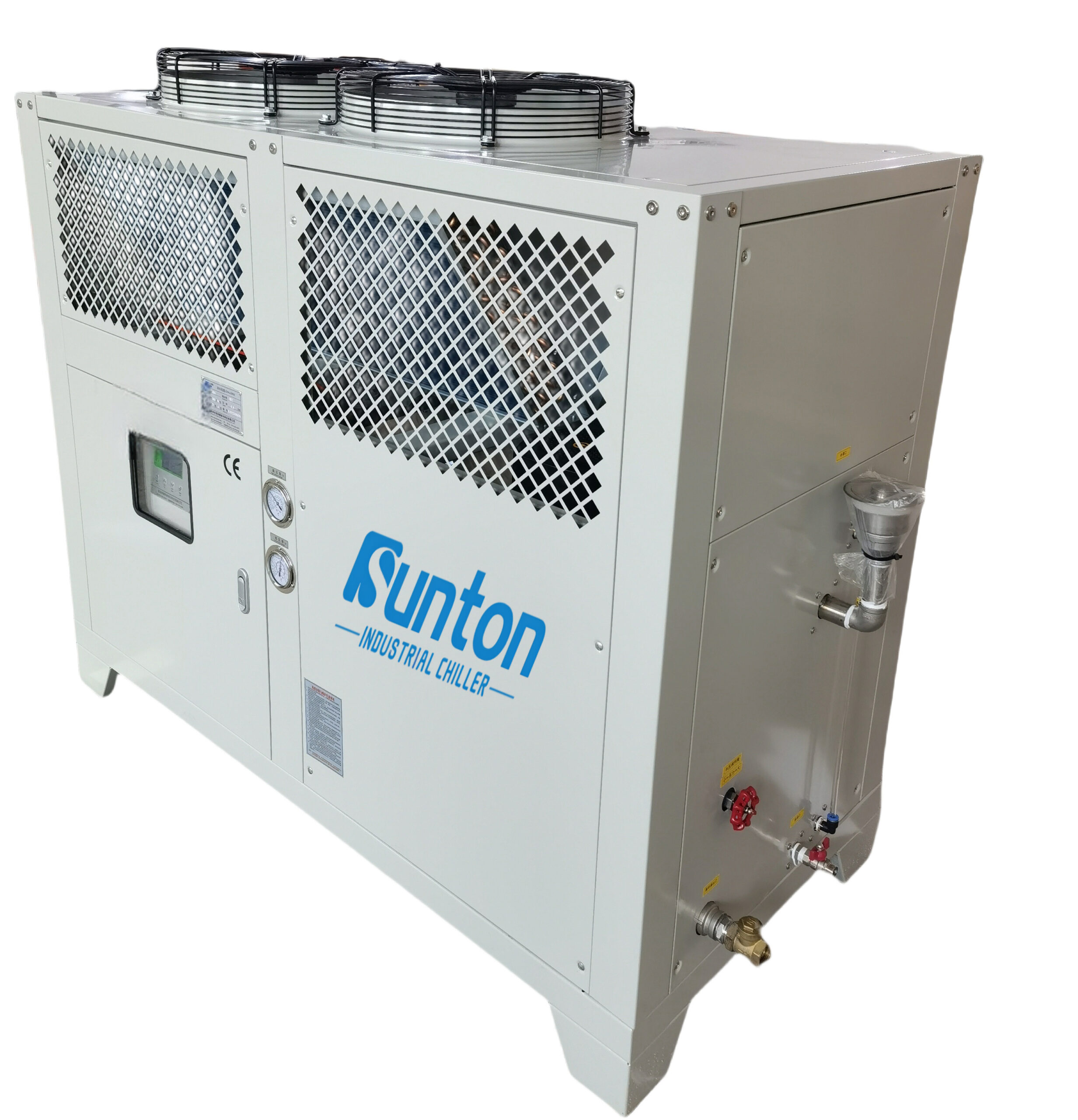-
Dalingshan Industrial Guangdong
Pendingin HVAC: Dasar-dasar Sistem Pendingin dan Bagaimana Sistem Pendingin Membuat Anda Tetap Dingin
Dasar-dasar Sistem Pendingin HVAC dan Cara Menjaga Anda Tetap Sejuk
Dalam dunia HVAC, pendingin berperan penting dalam menyediakan pendinginan untuk berbagai macam aplikasi komersial dan industri. Baik itu gedung perkantoran besar, rumah sakit, atau pabrik manufaktur, pendingin sangat penting untuk menjaga lingkungan yang sejuk dan nyaman. Artikel ini akan memberikan gambaran menyeluruh tentang sistem pendingin, menjelaskan dasar-dasar pendingin dan cara kerjanya untuk menyediakan pendinginan yang efisien. Memahami berbagai jenis pendingin, komponennya, dan pengoperasiannya sangat penting bagi siapa pun yang terlibat dalam pemilihan, pemasangan, atau pemeliharaan sistem penting ini. Jika Anda ingin mengoptimalkan sistem pendinginan gedung Anda atau sekadar ingin tahu tentang cara kerja pendingin, artikel ini wajib dibaca. Artikel ini akan memberi Anda pengetahuan yang Anda butuhkan.
Daftar Isi
Apa itu Chiller dan Bagaimana Cara Kerjanya?
Chiller adalah mesin yang menghilangkan panas dari cairan melalui siklus pendinginan kompresi uap atau penyerapan. Cairan ini kemudian dapat dialirkan melalui penukar panas untuk mendinginkan udara atau peralatan sesuai kebutuhan. Chiller digunakan dalam berbagai macam aplikasi komersial dan industri yang membutuhkan pendinginan. Chiller akan menggunakan refrigeran untuk menyerap dan menghilangkan panas. Chiller biasanya dikategorikan sebagai pendingin udara atau pendingin air, tergantung pada bagaimana mereka membuang panas. Dalam sistem chiller yang umum, air dingin atau pendingin lainnya dialirkan melalui bangunan untuk menyediakan pendingin udara atau untuk mendinginkan proses atau peralatan tertentu. Sistem pendingin adalah bagian penting dari infrastruktur HVAC bangunan besar mana pun. Mereka penting dalam hal memanaskan atau mendinginkan ruang besar.
Pendingin bekerja berdasarkan prinsip kompresi uap atau penyerapan uap. Dalam pendingin kompresi uap, zat pendingin dialirkan melalui sistem loop tertutup, di mana zat pendingin mengalami perubahan fase antara keadaan cair dan uap, menyerap dan membuang panas dalam prosesnya.
Jenis-jenis Pendingin: Berpendingin Udara vs. Berpendingin Air
Pendingin secara umum diklasifikasikan menjadi dua jenis utama berdasarkan cara pembuangan panasnya: pendingin berpendingin udara dan pendingin berpendingin air. Setiap jenis pendingin memiliki kelebihan dan kekurangannya sendiri. Jenis yang Anda pilih akan bergantung pada berbagai faktor, termasuk biaya, efisiensi, dan ketersediaan sumber daya.
- Pendingin Berpendingin Udara: Pendingin berpendingin udara menggunakan udara sekitar untuk menghilangkan panas dari refrigeran. Pendingin ini memiliki kumparan tempat refrigeran mengalir, dan kipas yang meniupkan udara melintasi kumparan ini untuk menghilangkan panas. Pendingin berpendingin udara membuang panas dari udara. Pendingin berpendingin udara umumnya lebih mudah dipasang dan dirawat daripada pendingin berpendingin air. Biaya pemasangannya juga lebih rendah karena tidak memerlukan menara pendingin atau sistem air terpisah. Pendingin ini sering kali lebih disukai di lokasi yang airnya langka atau mahal. Jelajahi Pendingin Sekrup Berpendingin Udara pilihan untuk solusi berpendingin udara yang efisien.
- Pendingin Berpendingin Air: Pendingin berpendingin air menggunakan air dari menara pendingin atau sumber air lainnya untuk menyerap panas dari refrigeran. Refrigeran mengalir melalui penukar panas yang disebut kondensor, tempat ia mentransfer panas ke air. Air yang dipanaskan kemudian dialirkan ke menara pendingin atau sistem pembuangan panas lainnya. Pendingin Air Sekrup Berpendingin Air adalah salah satu yang terbaik yang tersedia. Pendingin berpendingin air biasanya lebih hemat energi daripada pendingin berpendingin udara, terutama di daerah beriklim panas. Pendingin ini memberikan pendinginan yang sangat baik di cuaca terpanas. Namun, pendingin ini memerlukan pasokan air yang konstan dan mungkin lebih rumit untuk dipasang dan dirawat karena persyaratan perpipaan dan pengolahan air tambahan.
Komponen Utama Sistem Pendingin
Meskipun ada berbagai jenis pendingin, sebagian besar sistem pendingin kompresi uap memiliki beberapa komponen utama yang sama:
- Kompresor: Kompresor adalah jantung dari sistem pendingin. Kompresor mengedarkan refrigeran ke seluruh sistem dan memampatkan uap refrigeran, sehingga suhu dan tekanannya meningkat. Ini mempersiapkannya untuk tahap berikutnya, yaitu kondensor.
- Kondensator: Kondensor adalah penukar kalor yang menghilangkan kalor dari uap refrigeran bertekanan tinggi, yang menyebabkannya mengembun menjadi cairan bertekanan tinggi. Pada pendingin berpendingin udara, kondensor menggunakan udara sekitar untuk mendinginkan refrigeran. Pada pendingin berpendingin air, kondensor menggunakan air dari menara pendingin atau sumber air lainnya untuk mendinginkan refrigeran.
- Katup Ekspansi: Katup ekspansi adalah alat pengukur yang mengurangi tekanan refrigeran cair, menyebabkannya menguap sebagian dan mendingin secara signifikan. Katup ekspansi akan mengubah cairan bertekanan rendah menjadi uap.
- Penguap: Evaporator adalah penukar panas lain tempat refrigeran cair bertekanan rendah menyerap panas dari sistem air, menyebabkannya menguap sepenuhnya. Air dingin ini kemudian disirkulasikan untuk memberikan pendinginan pada bangunan atau proses. Di sinilah panas akhirnya dikeluarkan dari air dingin.
Komponen-komponen ini bekerja bersama-sama dalam siklus berkelanjutan untuk menyediakan pendinginan.
Memahami Siklus Refrigerasi pada Chiller
Siklus pendinginan adalah proses dasar yang memungkinkan pendingin membuang panas dan menyediakan pendinginan. Berikut penjelasan sederhana tentang cara kerja pendingin kompresi uap:
- Kompresi: Kompresor memampatkan uap refrigeran bertekanan rendah menjadi uap bersuhu dan bertekanan tinggi.
- Kondensasi: Uap refrigeran bertekanan tinggi dan bersuhu tinggi mengalir ke kondensor, tempat ia membuang panas ke udara sekitar (pada pendingin berpendingin udara) atau ke air di menara pendingin (pada pendingin berpendingin air). Saat refrigeran kehilangan panas, ia mengembun menjadi cairan bertekanan tinggi.
- Ekspansi: Refrigeran cair bertekanan tinggi kemudian melewati katup ekspansi, yang mengurangi tekanannya dan menyebabkannya menguap sebagian menjadi campuran cairan dan uap bertekanan rendah dan bersuhu rendah.
- Penguapan: Campuran refrigeran bertekanan rendah dan bersuhu rendah memasuki evaporator, tempat ia menyerap panas dari sistem air. Saat menyerap panas, refrigeran cair yang tersisa menguap sepenuhnya. Air dingin kemudian dialirkan melalui bangunan atau proses untuk memberikan pendinginan. Uap refrigeran kemudian kembali ke evaporator untuk memulai proses lagi.
Siklus ini berlanjut selama pendingin beroperasi, menyediakan pasokan air dingin atau pendingin secara terus-menerus.
Apa Keuntungan Menggunakan Sistem Pendingin?
Sistem pendingin menawarkan banyak manfaat untuk aplikasi komersial dan industri:
- Pendinginan yang Efisien: Pendingin dirancang untuk menyediakan pendinginan yang efisien untuk ruang atau proses yang besar, menjadikannya ideal untuk aplikasi yang memerlukan kontrol suhu yang tepat.
- Penghematan Energi: Pendingin modern menggabungkan teknologi hemat energi, seperti penggerak kecepatan variabel dan sistem kontrol canggih, yang dapat secara signifikan mengurangi konsumsi energi dan biaya pengoperasian dibandingkan dengan sistem pendingin udara tradisional.
- Peningkatan Kualitas Udara Dalam Ruangan: Pendingin dapat diintegrasikan dengan unit penanganan udara untuk menyediakan penyaringan dan ventilasi yang efektif, meningkatkan kualitas udara dalam ruangan dan kenyamanan penghuni.
- Fleksibilitas dan Skalabilitas: Sistem pendingin dapat disesuaikan untuk memenuhi berbagai kebutuhan pendinginan, mulai dari bangunan kecil hingga kompleks industri besar. Sistem ini juga dapat dengan mudah diperluas atau dikonfigurasi ulang sesuai kebutuhan.
- Umur Panjang: Dengan perawatan yang tepat, pendingin dapat memiliki umur panjang, biasanya 15-20 tahun atau lebih, menjadikannya investasi jangka panjang yang baik bagi bisnis.
Pertimbangan Efisiensi Energi untuk Pendingin
Efisiensi energi merupakan pertimbangan penting saat memilih dan mengoperasikan sistem pendingin. Berikut adalah beberapa faktor utama yang perlu diingat:
- Peringkat Efisiensi Pendingin: Carilah pendingin dengan peringkat Rasio Efisiensi Energi (EER) dan Nilai Beban Parsial Terpadu (IPLV) yang tinggi. Peringkat ini menunjukkan seberapa efisien pendingin beroperasi dalam berbagai kondisi beban.
- Penggerak Kecepatan Variabel: Pendingin yang dilengkapi penggerak kecepatan variabel pada kompresor dan kipas dapat menyesuaikan outputnya berdasarkan beban pendinginan aktual, sehingga secara signifikan mengurangi konsumsi energi selama kondisi beban parsial.
- Ukuran yang Tepat: Pendingin yang terlalu besar cenderung beroperasi secara tidak efisien, sering menyala dan mati. Sangat penting untuk memilih pendingin yang ukurannya sesuai dengan kebutuhan pendinginan spesifik Anda.
- Pengolahan Air: Pada pendingin berpendingin air, pengolahan air yang tepat sangat penting untuk mencegah pembentukan kerak dan korosi pada kondensor dan menara pendingin, yang dapat mengurangi efisiensi dan meningkatkan biaya perawatan.
- Perawatan Rutin: Perawatan yang tepat, termasuk pembersihan penukar panas secara teratur, pemeriksaan tingkat refrigeran, dan memastikan aliran udara yang tepat, sangat penting untuk menjaga efisiensi pendingin yang optimal.
Perawatan Sistem Pendingin: Memastikan Kinerja Optimal
Perawatan rutin sangat penting untuk memastikan pengoperasian sistem pendingin yang andal dan efisien. Berikut ini adalah beberapa tugas perawatan utama:
- Pemeriksaan Harian: Pantau parameter pengoperasian pendingin, seperti tekanan dan suhu refrigeran, suhu air, dan level oli. Segera selidiki setiap pembacaan atau alarm yang tidak biasa.
- Inspeksi Bulanan: Periksa sabuk, motor, dan komponen bergerak lainnya untuk mengetahui keausan dan kerusakan. Periksa kebocoran pada sistem pendingin dan air. Bersihkan atau ganti filter sesuai kebutuhan.
- Servis Tahunan: Lakukan pemeriksaan menyeluruh dan pembersihan seluruh sistem pendingin, termasuk evaporator, kondensor, dan kompresor. Periksa dan kalibrasi kontrol dan perangkat keselamatan. Analisis sampel refrigeran dan oli untuk mendeteksi potensi masalah.
- Pengolahan Air: Untuk pendingin berpendingin air, pertahankan kimia air yang tepat dalam loop air kondensor dan menara pendingin untuk mencegah kerak, korosi, dan pertumbuhan biologis.
- Manajemen Refrigeran: Pantau level refrigeran dan segera atasi kebocoran. Pastikan penanganan dan pembuangan refrigeran mematuhi peraturan lingkungan.
Memilih Pendingin yang Tepat untuk Aplikasi Anda
Memilih chiller yang tepat untuk aplikasi spesifik Anda memerlukan pertimbangan cermat terhadap beberapa faktor:
- Kapasitas Pendinginan: Tentukan kapasitas pendinginan yang dibutuhkan berdasarkan beban panas bangunan atau proses Anda. Pertimbangkan faktor-faktor seperti ukuran bangunan, hunian, beban panas peralatan, dan persyaratan proses.
- Jenis Pendingin: Pilih antara pendingin berpendingin udara dan berpendingin air berdasarkan faktor-faktor seperti iklim, ketersediaan air, biaya pemasangan, dan pertimbangan efisiensi energi. Pertimbangkan Pendingin Sentral Sekrup Berpendingin Air untuk fasilitas besar.
- Persyaratan Suhu: Pilih pendingin yang dapat memenuhi persyaratan suhu tertentu. Misalnya, beberapa proses industri mungkin memerlukan suhu yang sangat rendah, sementara aplikasi pendinginan yang nyaman biasanya memerlukan suhu yang lebih tinggi.
- Efisiensi Energi: Bandingkan peringkat efisiensi pendingin (EER, IPLV) dan pertimbangkan fitur seperti penggerak kecepatan variabel untuk meminimalkan konsumsi energi.
- Dampak Lingkungan: Pertimbangkan dampak lingkungan dari refrigeran yang digunakan dalam pendingin. Cari pendingin yang menggunakan refrigeran dengan potensi pemanasan global (GWP) yang rendah.
- Persyaratan Perawatan: Evaluasi persyaratan perawatan berbagai jenis pendingin dan pilih sistem yang sesuai dengan kemampuan dan anggaran perawatan Anda. Pendingin yang efisien akan membutuhkan lebih sedikit perawatan.
Dampak Lingkungan dari Sistem Pendingin
Sistem pendingin dapat memiliki dampak lingkungan yang signifikan, terutama terkait dengan konsumsi energi dan emisi refrigeran:
- Konsumsi Energi: Pendingin merupakan konsumen listrik utama di banyak gedung. Memilih pendingin hemat energi dan mengoptimalkan pengoperasiannya dapat mengurangi konsumsi energi dan emisi gas rumah kaca secara signifikan.
- Emisi Refrigeran: Beberapa refrigeran yang digunakan dalam pendingin lama memiliki potensi pemanasan global (GWP) yang tinggi dan dapat berkontribusi terhadap perubahan iklim jika dilepaskan ke atmosfer. Pendingin modern semakin banyak menggunakan refrigeran dengan GWP yang lebih rendah, dan peraturan mulai menghapus penggunaan refrigeran dengan GWP tinggi. Pendingin glikol gunakan refrigeran yang ramah lingkungan.
- Konsumsi Air: Pendingin berpendingin air dapat mengonsumsi air dalam jumlah yang signifikan, terutama di daerah beriklim panas dan kering dengan tingkat penguapan yang tinggi dari menara pendingin. Menerapkan langkah-langkah penghematan air, seperti menggunakan air daur ulang atau pendingin berpendingin udara, dapat membantu mengurangi konsumsi air.
- Polusi Suara: Beberapa pendingin, khususnya model berpendingin udara, dapat menimbulkan kebisingan yang signifikan. Memilih pendingin dengan desain yang rendah kebisingan dan menempatkannya dengan tepat dapat membantu meminimalkan dampak kebisingan pada penghuni gedung dan tetangga.
Tren Masa Depan dalam Teknologi Pendingin
Industri pendingin terus berkembang, dengan kemajuan teknologi yang terus-menerus yang bertujuan untuk meningkatkan efisiensi, mengurangi dampak lingkungan, dan meningkatkan kinerja. Berikut ini beberapa tren utama:
- Refrigeran GWP Rendah: Industri sedang beralih ke refrigeran dengan potensi pemanasan global yang lebih rendah, didorong oleh regulasi dan masalah lingkungan.
- Kompresor Bearing Magnetik: Kompresor bantalan magnetik, yang menggunakan medan magnet untuk menggerakkan poros kompresor, semakin populer karena efisiensinya yang tinggi, perawatan yang berkurang, dan pengoperasian yang tenang.
- Kontrol Cerdas: Sistem kontrol canggih dengan kemampuan prediktif, algoritma pembelajaran mesin, dan pemantauan jarak jauh menjadi semakin umum, memungkinkan kinerja pendingin yang optimal dan pemeliharaan proaktif.
- Penyimpanan Termal: Integrasi dengan sistem penyimpanan termal, seperti penyimpanan es atau penyimpanan air dingin, dapat membantu mengalihkan beban pendinginan ke jam-jam di luar jam sibuk, sehingga mengurangi biaya energi dan permintaan puncak.
- Pendingin Modular: Pendingin modular, yang terdiri dari beberapa unit pendingin kecil yang dapat dinyalakan atau dimatikan berdasarkan permintaan, semakin populer karena fleksibilitas, redundansi, dan efisiensi energinya.
Pertanyaan Umum
Apa perbedaan antara chiller berpendingin udara dan berpendingin air?
Pendingin berpendingin udara menggunakan udara sekitar untuk membuang panas dari refrigeran, sedangkan pendingin berpendingin air menggunakan air dari menara pendingin atau sumber air lainnya. Pendingin berpendingin air umumnya lebih hemat energi tetapi memerlukan pasokan air dan memiliki biaya pemasangan yang lebih tinggi.
Seberapa sering sistem pendingin harus diservis?
Sistem pendingin harus diperiksa dan diservis setidaknya setiap tahun oleh teknisi HVAC yang berkualifikasi. Perawatan yang lebih sering mungkin diperlukan tergantung pada jenis pendingin, kondisi pengoperasian, dan rekomendasi pabrik.
Berapa umur rata-rata sebuah chiller?
Dengan perawatan yang tepat, pendingin dapat bertahan 15-20 tahun atau lebih. Namun, masa pakai sebenarnya dapat bervariasi tergantung pada faktor-faktor seperti kualitas peralatan, kondisi pengoperasian, dan praktik perawatan.
Bagaimana saya dapat meningkatkan efisiensi energi pada sistem pendingin saya?
Anda dapat meningkatkan efisiensi energi dengan memilih pendingin dengan peringkat EER dan IPLV yang tinggi, menggunakan penggerak kecepatan variabel, memastikan pengolahan air yang tepat (untuk pendingin berpendingin air), dan melakukan pemeliharaan rutin.
Apa peran chiller dalam sistem HVAC komersial?
Dalam sistem HVAC komersial, pendingin menyediakan air dingin yang dialirkan melalui kumparan di unit penanganan udara. Penangan udara kemudian meniupkan udara melewati kumparan ini dan mendistribusikan udara dingin ke seluruh bangunan.
Bisakah pendingin digunakan untuk pemanasan sekaligus pendinginan?
Ya, beberapa pendingin, yang dikenal sebagai pendingin pompa kalor, dapat memberikan pendinginan dan pemanasan. Pendingin ini bekerja dengan membalik siklus pendinginan untuk menyerap kalor dari udara luar atau sumber air dan memindahkannya ke dalam ruangan.
Kesimpulan
- Pendingin sangat penting: Pendingin memainkan peran penting dalam menyediakan pendinginan untuk berbagai macam aplikasi komersial dan industri, dari gedung perkantoran dan rumah sakit hingga pabrik manufaktur dan pusat data.
- Efisiensi itu Penting: Memilih pendingin hemat energi dan mengoptimalkan operasinya dapat mengurangi konsumsi energi dan biaya pengoperasian secara signifikan.
- Pemeliharaan adalah Kuncinya: Perawatan rutin sangat penting untuk memastikan pengoperasian sistem pendingin Anda yang andal dan efisien.
- Teknologi Berkembang: Industri pendingin terus maju, dengan teknologi dan inovasi baru yang ditujukan untuk meningkatkan efisiensi, mengurangi dampak lingkungan, dan meningkatkan kinerja.
- Keahlian sangatlah penting: Pemilihan, pemasangan, dan perawatan sistem pendingin memerlukan pengetahuan dan keahlian khusus. Bermitra dengan perusahaan HVAC yang memiliki reputasi baik dan berpengalaman dalam teknologi pendingin sangat penting untuk memastikan hasil yang optimal.
Dengan memahami dasar-dasar pendingin dan tetap mendapatkan informasi tentang kemajuan terbaru dalam teknologi pendingin, bisnis dapat membuat keputusan yang tepat yang meningkatkan kenyamanan, meningkatkan produktivitas, dan mengurangi biaya operasional. Lain kali Anda menikmati lingkungan yang sejuk dan nyaman di gedung besar, ingatlah peran penting yang dimainkan pendingin dalam mewujudkan semua itu.

